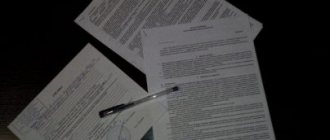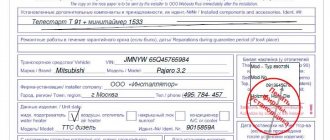The most common consumer requirement when identifying a product defect is warranty repair. According to the law, all costs in connection with its implementation are borne by the seller, manufacturer or organization that imported the goods from abroad (hereinafter referred to as the obligated person). Naturally, avoiding such a burden is one of the primary tasks of the seller (manufacturer, importer).
We have compiled detailed instructions, following which you can achieve high-quality repairs under warranty in a short time.
What you need to know
First, let's look at the main points that you need to know when discovering deficiencies and submitting a repair request.
What shortcomings need to be eliminated?
The defect must be corrected if it was not provided for in the contract and the buyer was not warned about the presence of defects in the goods upon purchase (he did not agree to accept the goods in this form). So, carefully look at the documents for the product, and if they indicate that the product is defective (for example, a refrigerator whose freezer lighting does not work), then such a defect will not be covered by warranty repair.
Is it worth asking for repairs?
Warranty repair is an alternative requirement of the buyer. Instead of repairs, you can demand a refund, replacement of goods, reimbursement of repair costs on your own, etc. The choice of these requirements belongs to the buyer if we are talking about durable goods that are not technically complex goods.
With technically complex goods the situation is more complicated (what is a technically complex product). If the first defect (except for a significant one) is discovered after 15 days after purchase , a technically complex product can only be repaired (exchanged, money cannot be returned).
Therefore, if we are talking about a simple durable product or secondary repair of technically complex products, you should think about it. Perhaps a refund or replacement will be more economically feasible.
Warranty repair periods
There are periods when repairs can be considered under warranty and therefore free of charge. Such deadlines are usually divided into the following categories:
- during the stated warranty period;
- upon expiration of the warranty, but within 2 years;
- after 2 years, but during the service life;
- after 2 years, but within 10 years if the service life is not specified.
Where to go
At his choice, the buyer can contact:
- to the seller;
- the manufacturer of the goods;
- importer (organization that delivered the goods from abroad).
A visual table of the buyer's request for warranty repairs.
| Period | Type of deficiency | Who can I contact? | Having an obligation to repair | It is the buyer's responsibility to prove manufacturing defects |
| During the warranty period | Common drawback | Seller, manufacturer, importer | Yes | No |
| During the warranty period | Essential | Seller, manufacturer, importer | Yes | No |
| After the warranty period expires, within 2 years from the date of purchase | Ordinary | Seller, manufacturer, importer | Yes | Yes |
| After the warranty period expires within 2 years | Significant disadvantage | Seller, manufacturer, importer | Yes | Yes |
| After 2 years, but the service life period | Common drawback | Manufacturer | No | — |
| After 2 years, but during the service life, | Significant disadvantage | Manufacturer | Yes | Yes |
| After 2 years, but within 10 years if the service life is not specified | Common drawback | Manufacturer | No | — |
| After 2 years, but within 10 years if the service life is not specified | Significant disadvantage | Manufacturer | Yes | Yes |
Non-warranty cases
Please note that not all breakdowns may be subject to warranty repair. The seller (manufacturer, importer) is not obliged to eliminate defects free of charge if they arise due to:
- careless use (for example, dropping a smartphone on a hard surface);
- improper use (for example, using a blender to loosen soil for houseplants);
- exposure to natural elements, as well as substances that are incompatible with the performance of the product (for example, liquid getting on a laptop);
- improper transportation or storage of goods (for example, transporting the monitor in a metal car body without fixing or softening materials).
The buyer's procedure if the seller carries out repairs voluntarily
Appear to the seller with a statement
It is necessary to submit a written request to the seller (manufacturer, importer) to eliminate defects in the product free of charge (sample application).
Any person can act on behalf of the buyer under a notarized power of attorney. It is better to entrust such matters to a lawyer or a person experienced in such matters. The application for warranty repair must be handed over to an authorized employee of the seller against signature, that is, the second copy (which will remain with you) must bear the signature of the person who accepted the application, preferably sealed, plus the date.
Transfer the goods
Along with the application, the seller (manufacturer, importer) receives the defective product. By law, the seller is obliged to accept the goods, even if the case turns out to be non-warranty. The transfer of goods for warranty repair must be formalized by an act of acceptance of the goods from the buyer. Such a document must be drawn up by the seller. But be sure to make sure that the document contains the following information:
- date of transfer of goods;
- from whom the thing was received;
- who received the goods;
- a detailed description of the product indicating the serial (other identification) number, external damage or traces of use (if any);
- presence or absence of factory seals;
- description of signs of breakdown according to the buyer;
- confirmation by the seller that the case is under warranty and the product is accepted for repair.
You should know that if the goods weigh more than 5 kg or are large, the buyer may require delivery of the goods from the location of the goods for repair and back at the expense and efforts of the seller (manufacturer, importer), or compensate for the costs of independent delivery.
Check the quality of the product
The situation with the transfer of goods and repairs can be complicated if the seller does not immediately recognize the repair as warranty, but intends to conduct a quality check. It is carried out:
- immediately upon delivery of the goods;
- some time after receiving the goods.
When a quality check is carried out immediately on the spot and the defects of the goods are confirmed, an act of acceptance and transfer of goods for repair from the buyer to the seller (manufacturer, importer) is drawn up immediately after the check. That is, almost at the same time as when submitting demands for free repairs.
In a situation where the seller intends to carry out an inspection later, the goods must be sealed in packaging material (polyethylene, cardboard box, etc.) in such a way as to prevent access to the goods (opening, disassembling, etc.) without the participation of the buyer. The packaging must be signed by the buyer and seller.
The packaging can be opened when the seller checks the goods in the presence of the buyer, which is noted in the document on the goods check. If the seller conducted an inspection without notifying the buyer and opened the package without him, then all the results of the inspection can be questioned.
All these measures are necessary to avoid illegal actions of unscrupulous sellers, creating the appearance of the consumer’s fault for shortcomings. For example , liquid may be deliberately spilled on a laptop, resulting in a short circuit. Under such conditions, naturally, the cause of failure will be supposedly improper operation (ingress of liquid). The blame is thereby shifted to the consumer.
Request a replacement product during repairs
The consumer has the right to receive a similar item during the repair period. To do this, a written application (application sample) is drawn up. The seller is obliged to provide a free temporary replacement of the product within 3 days. But it should be borne in mind that not any product can be obtained for temporary use during the repair period. Not provided:
| 1. | Cars, motorcycles, jet skis, scooters, yachts, motor boats, etc.; |
| 2. | Electrical household items for personal use (hygienic purposes, toiletry and care items (hair dryers, shaving machines, tongs, etc.), medical items, etc.); |
| 3. | Electrical household appliances for food processing and cooking; |
| 4. | Furniture; |
| 5. | Civilian weapons, components and ammunition for them. |
Repair completion time
The law provides for 2 warranty repair periods:
- within 45 days with the conclusion of a written agreement on the repair period;
- immediately (as far as the level of technical progress allows, depending on the complexity and labor intensity of the repair). In any case, this period should not exceed 45 days.
The period is calculated from the moment the goods are transferred until they are returned to the buyer with the defects eliminated. In this case, quality control, examination, or legal proceedings suspend the total period of warranty repairs. Of course, if it is not the consumer's fault.
There are cases when the seller does not meet the repair deadlines. You should know that the seller cannot have any valid reasons to justify his delay (even in the absence of the necessary materials, spare parts and components, etc.). Therefore, such explanations cannot become the basis for concluding an additional agreement to extend the period of warranty repairs.
If the repair period is not met, the following situations are possible:
- the seller and the buyer can draw up an agreement to extend the terms (the agreement is drawn up voluntarily);
- The buyer may refuse repairs and make other demands regarding the quality of the product:
- replacement with a similar one;
- replacement with a product of the same brand, but of a different model with recalculation of the price;
- refund of money paid;
- proportionate reduction in price.
Violation of the terms of warranty repair of a product can be to the advantage of the buyer who has submitted a technically complex product for repair. After all, such a delay allows you to put forward other demands (refund, replacement, etc.), which the consumer cannot initially put forward when a defect is discovered.
However, a buyer who decides to take advantage of the violation of deadlines to put forward new demands must take measures to recover the goods from the obligated person. Otherwise, the seller may repair it (without deadlines) and then it will be difficult to put forward other demands.
In addition, the buyer can simply demand a penalty (fine) for a missed repair period or the deadline for providing goods in exchange for the duration of the repair. The fine is 1 percent of the cost of the goods for each day of delay.
For example , a music center worth 10,000 rubles was put into repair. The buyer made a demand for the provision of a similar product, which was presented not within 3 days, but after 7 days. Accordingly, the delay is 4 days, that is, 4 percent of the cost of the goods (1 percent x 4 days). Thus, the seller must pay a fine of 400 rubles. (4 percent x 10,000 rubles).
The need to pay a fine must be submitted in writing to the seller. Otherwise, it is considered that the buyer waives his right to collect the penalty.
Returning goods after warranty repair
When the repair is completed, the seller notifies the buyer of the opportunity to return the item.
Upon receipt of the goods, you should carefully inspect it for safety and the absence of new defects (which did not exist previously). Demand that they show you the serviceability of the product and provide you with a report (certificate) on the repairs made. The certificate states:
- date of submission of the repair request;
- when the goods were accepted from the buyer;
- repair period;
- description of existing deficiencies, used spare parts and components;
- confirmation of defect elimination;
- date of return of the item to the owner.
State duty amount
If the value of the claim exceeds one million rubles, then you will have to pay a state fee. Thus, when filing claims over 1 million rubles, the state duty will be 13,200 rubles.
Plus half a percent of the amount that exceeds 1,000,000. However, the maximum amount of state duty cannot exceed 60,000 rubles. This requirement is enshrined in subparagraph 1 of paragraph 1 of Article 333.19 of the Tax Code of the Russian Federation.
At the same time, by paragraph 3 of Article 333.36 of the Tax Code of the Russian Federation, consumers can reduce the amount of state duty by the amount of state duty, which is payable if the value of the claim is one million rubles.
Procedure for the buyer in case of refusal of the seller (manufacturer, importer) from warranty repairs
Give the application and product to the seller
The first two steps of the buyer’s algorithm if the seller is unwilling to provide warranty service are similar to the actions if the seller voluntarily satisfies his demands for the elimination of product defects. Therefore, without stopping there, we move on.
The seller refers to a non-warranty case
The seller/manufacturer/importer, after checking the quality, does not accept the obligation to provide free repairs, speaking of a non-warranty case. The situation can develop in two scenarios:
- the seller organizes and conducts an examination of product quality;
- the obligated person refuses further manipulations with the goods, citing the sufficiency of quality control on their own.
In the first case (when the seller plans to submit the goods for examination), the goods must be packaged, sealed and signed by the parties.
The packaging must be opened by an expert during a commodity examination in the presence of the buyer.
In the second case , when the seller refuses the examination, these events are organized by the consumer himself.
The seller agrees with the examination that is positive for the buyer
With such results of the examination, the seller’s actions are usually aimed at satisfying the requirement to repair the defect, since the obligated person understands that the outcome of the dispute has already been predetermined in favor of the consumer and further litigation does not promise him anything other than additional expenses. In addition, the search for those who are right and wrong may disrupt the repair period, which gives the buyer the right to make a new, more severe demand (including refusal of the purchase and sale agreement and the return of money paid for the item).
Going to court
However, there are not isolated cases when a supplier goes all-in to the end. Such a person can be forced to carry out warranty repairs only by a court decision.
If the purchaser has applied for warranty repairs in a timely manner and in the prescribed form, and the expert opinion confirms that the consumer is right, then the case is a winning one.
Before going to court, the future defendant is sent a claim. It refers to the expert opinion. If the claim is rejected, it must be attached to the claim. And if no response is received, simply indicate this in the statement of claim. Leaving a claim unanswered is equivalent to a refusal to satisfy it.
Naturally, the preparation and conduct of the case in court should be carried out by a professional (lawyer, lawyer, representative of the consumer rights protection committee).
Execution of a court decision
After the court decision comes into force, receive a writ of execution and submit it to the bailiff department. The bailiffs will do the rest.
Comparative table of buyer actions for various positions of the obligated person
| The seller voluntarily fulfills the requirement for warranty repairs | The seller refuses to satisfy the requirement to eliminate defects in the goods until the goods are examined | The seller refuses to satisfy the requirement to eliminate defects in the goods until a court decision |
| Flaw detection | Flaw detection | Flaw detection |
| Requests for repairs | Requests for repairs | Requests for repairs |
| Transfer of goods for inspection | Transfer of goods for inspection | Transfer of goods for inspection |
| Confirmation of repair warranty and repairs | Recognition of the case as non-warrantable | Recognition of the case as non-warrantable |
| Returning goods to the consumer | Carrying out examination of goods | Carrying out examination of goods |
| — | Carrying out repairs | Refusal to satisfy consumer requirements |
| — | Returning goods to the consumer | Filing a pre-trial claim |
| — | — | Making a court decision |
| — | — | Appeal to bailiffs |
| — | — | Forced repair of goods |
| — | — | Returning goods to the owner |
How to avoid disputes with consumers
We told you how to act if the consumer has already made demands on the timing and quality of the service. But it is better for an entrepreneur to protect himself in advance from disputes with clients:
- Set deadlines for completing work with reserve in the contract. It is better to deliver the result early and please the customer than to be late and pay penalties and losses.
- Comply with GOSTs, as well as technical specifications and other written agreements with the client. Take care of the safety of the service process and work. Service of impeccable quality is reliable protection against consumer abuse of their rights.
- If the consumer nevertheless makes a justified claim, satisfy his demands within the legal time limit. If there is a disagreement, try to come to an agreement, offer a free bonus or something similar. Don’t bring it to court, complaints and fines.
The article is current as of 01/28/2021
About the warranty period
When carrying out repairs, the warranty period is suspended for the period from the moment the claim is made until the product is returned to the consumer. If there was a legal dispute and the case was in favor of the buyer, then the entire period of legal proceedings is also not counted towards the warranty period.
For example , the warranty period for a TV is 1 year and is set from 01/01/2020 to 01/01/2021. The consumer contacted the seller on 12/30/2020. Repairs were carried out until 01/15/2021. As a result, the product warranty will be valid until 01/17/2021 G.
It should be borne in mind that if during the repair a component part is replaced, for which a separate warranty was established in addition to the warranty for the product as a whole, then a new warranty is established for the replaced part of the same duration as it was before the replacement. Its period runs from the moment the goods are transferred to the buyer.
For example , a laptop included a power supply with a 6-month warranty. After 5 months, the laptop broke down and was sent in for repair. As a result of the repair, the laptop's video card was replaced and the power supply was replaced. The warranty period for the laptop remains the same (minus the repair period), and the power supply has a new warranty of 6 months, which begins to be calculated from the moment the product is returned to the buyer.
Comments on the document “Claim under an apartment renovation agreement”
Personal message | Reply 0
| Toraev Leonid Status: Client | 10/03/2021 at 07:30:15 I myself encountered a similar situation when the repair team missed all the deadlines. Fortunately, everything is behind me and now I’m busy purchasing furniture and doors for the apartment. I want to order a dorsal profile https://profildoors-salon.ru/ They write that at the moment it has no equal in quality. We plan to buy canvases with glass inserts for all rooms. |
About primary and secondary repairs
Primary repair is when a product defect occurs and is repaired for the first time.
Secondary repair – repeated repair is required if the defect appears repeatedly. In this case, it does not matter what the frequency of the defect is (exactly the same defect or of a different nature), the main thing is that the same product must be repaired more than once.
Attention! If the product has several defects at once, but this is the first time you have requested repairs, then such a one-time repair will be primary, regardless of the number of defects being eliminated.
This question arises acutely when there are shortcomings in a technically complex product, since the primary or secondary nature of the repair determines the set of powers of the consumer. Let us remind you that if there is a significant deficiency, the choice of consumer requirements does not depend on the number of repairs.
A visual table of consumer requirements for a technically complex product.
| During initial repair | In case of secondary | If a significant deficiency is detected |
|
|
|
Compensation for consumer expenses for repairs made by yourself or a third party
The buyer is not prohibited from making repairs himself and subsequently recovering costs from the seller. Sometimes the buyer does not trust repairs to third parties or organizations simply unknown to him. Or situations arise when repairs cannot wait for delays, and also when the remoteness of the seller does not allow timely notification of warranty repairs. However, there are several important points that determine the success of the implementation of such a buyer's right. Let's take a closer look.
Who can make repairs
So, repair of a product defect can be carried out:
- by the buyer himself;
- by a third party.
In turn, third parties are:
- any outsider (both citizen and organization);
- a specialized organization (certified specialist) that has the right to carry out repair work taking into account work experience, existing license, accreditation, certification, etc.
What expenses are reimbursed?
1) If the repair was made by the buyer himself:
- cost of spare parts, components, etc.;
- costs for the delivery of spare parts and components, if it is impossible, due to their specificity and rarity, to be purchased at the place of repair;
- costs of consumables (glue, hardware, seals, wires, etc.);
- the cost of disposable tools and devices for repairs.
2) If the repairs were carried out by an outside organization (specialist), the costs include the cost of:
- spare parts, components, as well as their delivery;
- Supplies;
- disposable instruments and devices;
- work performed in accordance with the established price list (price list) or within the average market price.
How are repair costs reimbursed? Option #1
The law does not provide clear rules for satisfying this requirement. Therefore, one should proceed from the prevailing practice and optimality of achieving the goal. It is best to adhere to the following algorithm.
Stage No. 1. First, the buyer must notify the seller (manufacturer, importer) about the detected defect in the product and put forward a requirement that he intends to carry out repairs on his own (sample application).
Stage No. 2. Then present the product to the seller to confirm the warranty case (quality check or examination (in case of a dispute about a defect)). At this stage, the seller or buyer can agree on a preliminary price for the repair. That is, the size is determined based on existing experience in repair work. If the preliminary amount turns out to be less, then the missing difference can subsequently be made up by an additional payment. The general period for payment of compensation for repairs is 10 days from the date of filing the claim.
Stage No. 3. Organize repairs.
Stage No. 4. Submit a cost report (sample) with documents confirming the repairs and costs. When the defect is corrected on its own, the buyer submits receipts for spare parts, materials, etc. When repairs are carried out by a third party, an act of work performed, a certificate of the cost of materials, a delivery note, an invoice, etc. (in a word, documents, usually drawn up by organizations and entrepreneurs in confirmation of work).
If there are no such documents, you can contact an appraiser who will give an opinion on the cost of repairs. True, it will not be possible to recover the cost of such a conclusion from the seller.
How are repair costs reimbursed? Option No. 2
An alternative procedure is for the buyer to contact the obligated person with a request to reimburse the costs of repairs after they have been carried out. This procedure is not prohibited by law. However, if a controversial situation arises, the buyer must prove to the seller that the product had a defect that he eliminated, and also justify the costly part of the repair. This task is not easy.
What are the restrictions?
The warranty may stipulate that the elimination of product defects must be carried out by a specialized organization (certified specialist) that has the necessary approvals (compliance with established requirements) for such work. Without compliance with such requirements, repairs may be considered improper, and the costs for them may not be reimbursed. Moreover, this may cause the product to be removed from further warranty.
This, of course, does not mean that the buyer is deprived of the right to choose a specialist in whom he is confident, or to carry out independent repairs. The question comes down only to the complexity and features of the product that has failed. For example, the law provides for a license for the maintenance and repair of medical equipment. Therefore, the repair of, say, a blood pressure monitor by an organization that does not have the specified license will be illegal. For the same reason, the consumer cannot repair this product himself.
It’s another matter if the seller imposes repairs only from accredited specialists (organizations). The buyer can order repairs from any person who has the appropriate permit, license, or certificate to carry out such work. Whether it is included in the list of recommended organizations of the seller is no longer important, and this does not affect the legality of the buyer’s claims for reimbursement of expenses.
However, it must be borne in mind that in a controversial situation, the seller can conduct an examination of the qualifications of the repair. And if the work does not meet accepted standards, the buyer’s intention to reimburse expenses will be unauthorized.
Results
Thus, a claim for services of inadequate quality is subject to the general rules for drawing up a claim, taking into account the specifics established by the Law (for consumers - individuals), special laws in a particular service sector and business customs in this branch of civil legal relations.
Consumers can use sample claims developed by Rospotrebnadzor and its territorial bodies, and organizations can use a sample claim posted on our resource. You can find more complete information on the topic in ConsultantPlus. Free trial access to the system for 2 days.
Difficult situations
Additional actions requiring payment
Sometimes the seller, during repairs, may take additional actions that go beyond the scope of warranty repairs (for example, when repairing a computer, an updated version of the operating system is installed). Often the seller explains this by the need for the product to perform better and demands payment for this.
If these works and services were provided without the knowledge (without permission) of the buyer, then payment is not required. All costs incurred are the responsibility of the seller. He will not be able to forcibly collect them from the consumer, even through court.
Declaring repairs out of warranty
A similar situation occurs when the product is accepted for warranty repair, the defects are corrected, and then it is declared that the case was not covered by warranty. That is, the repairs were of a commercial nature and must be paid for. The deceived owner of the item is not obliged to pay. Even if the defect in the product is clearly related to the buyer’s fault and the seller provides evidence confirming this fact (an expert opinion, a certificate from a service center, etc.), the consumer will not have any obligation to reimburse the seller’s expenses. This situation will be interpreted as a manifestation of the seller’s goodwill in providing free repairs.
Leave a comment on the document
Do you think the document is incorrect? Leave a comment and we will correct the shortcomings. Without a comment, the rating will not be taken into account!
Thank you, your rating has been taken into account. The quality of documents will increase from your activity.
| Here you can leave a comment on the document “Claim under an apartment renovation agreement”, as well as ask questions associated with it. If you would like to leave a comment with a rating , then you need to rate the document at the top of the page Reply for |









